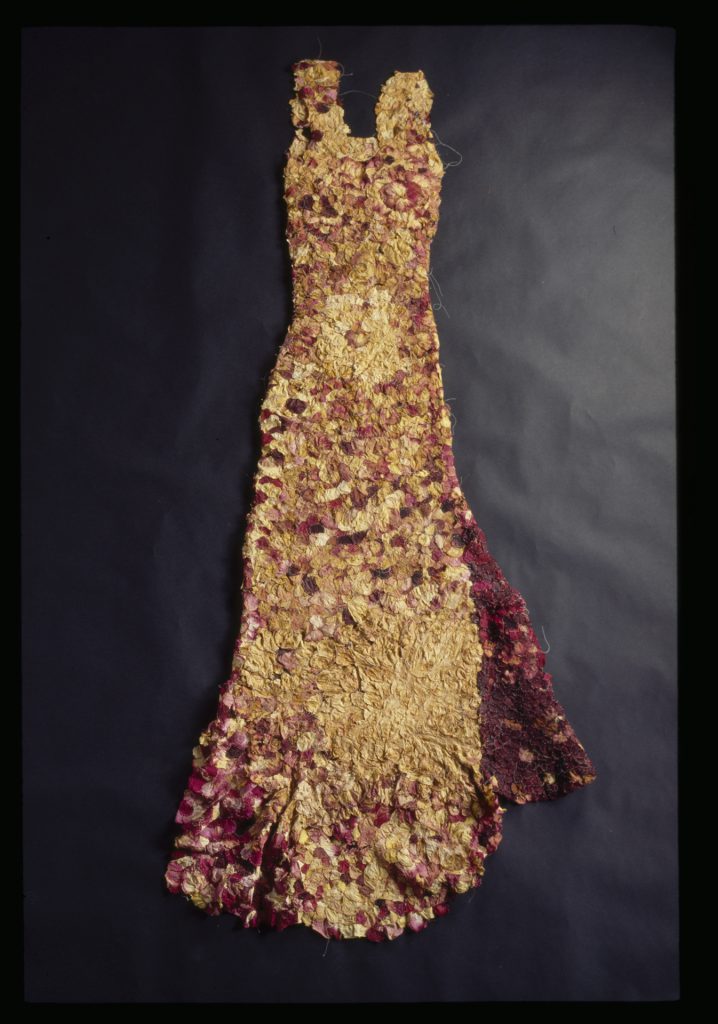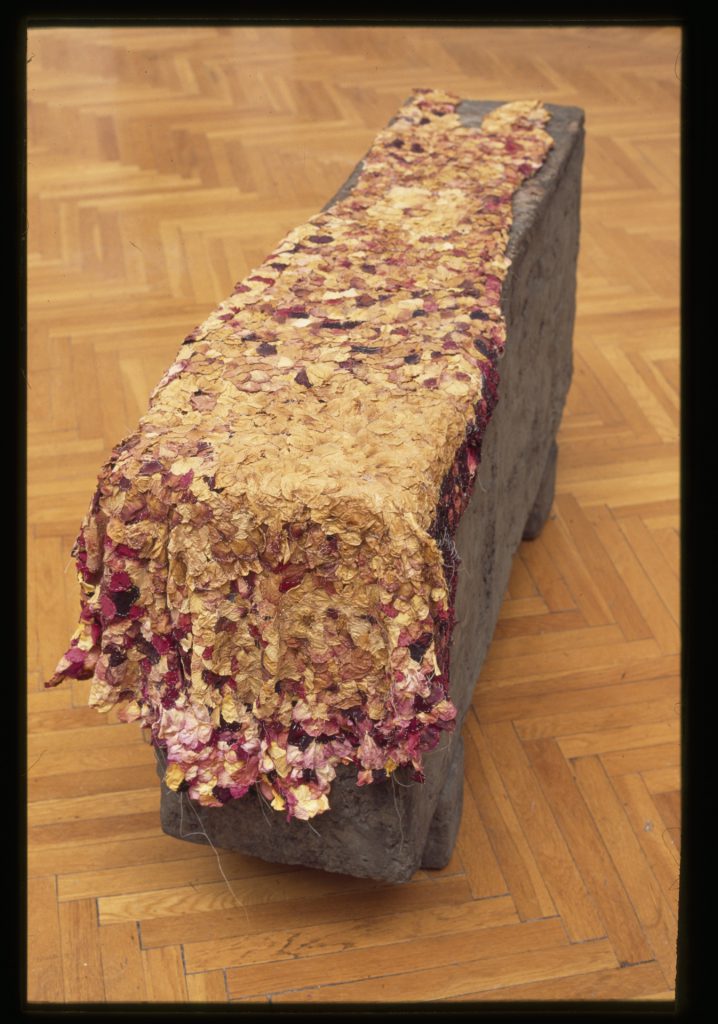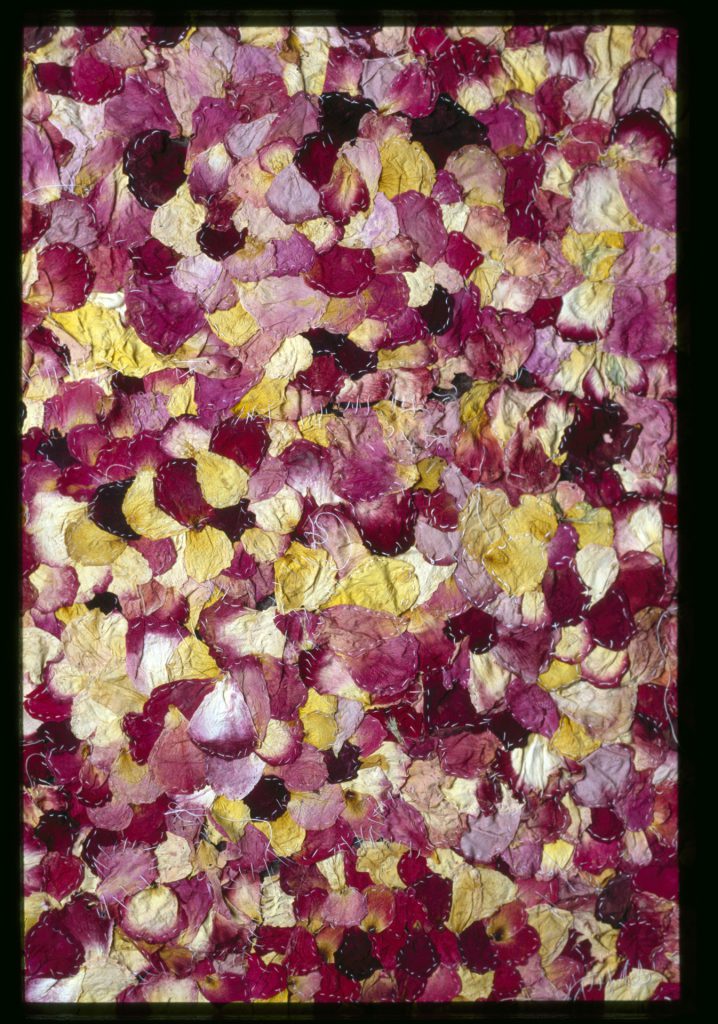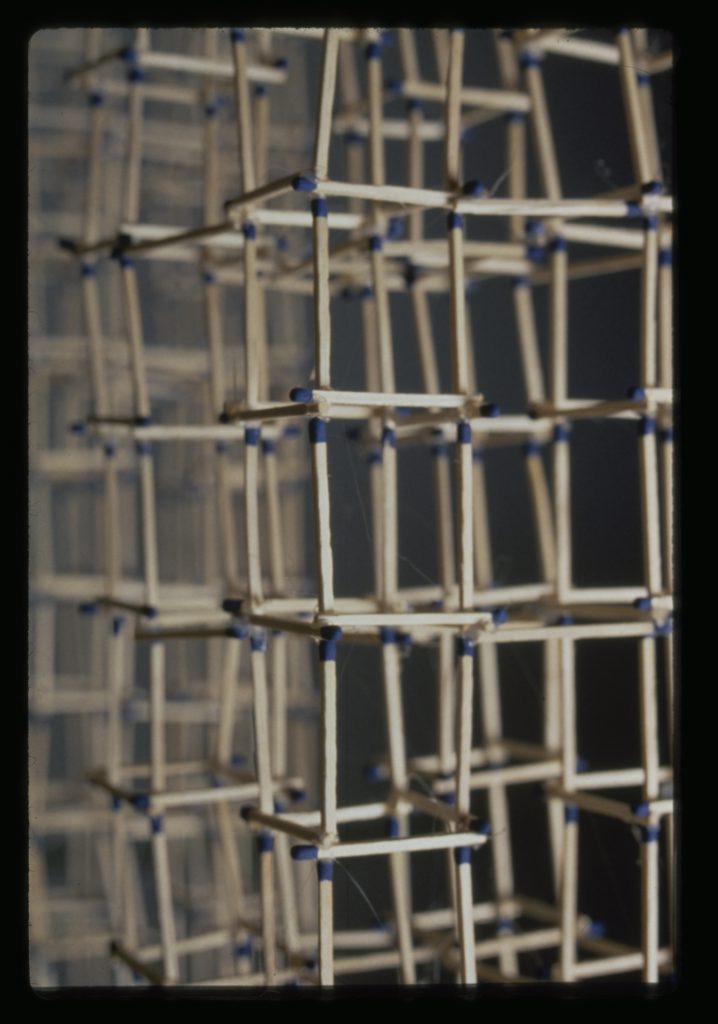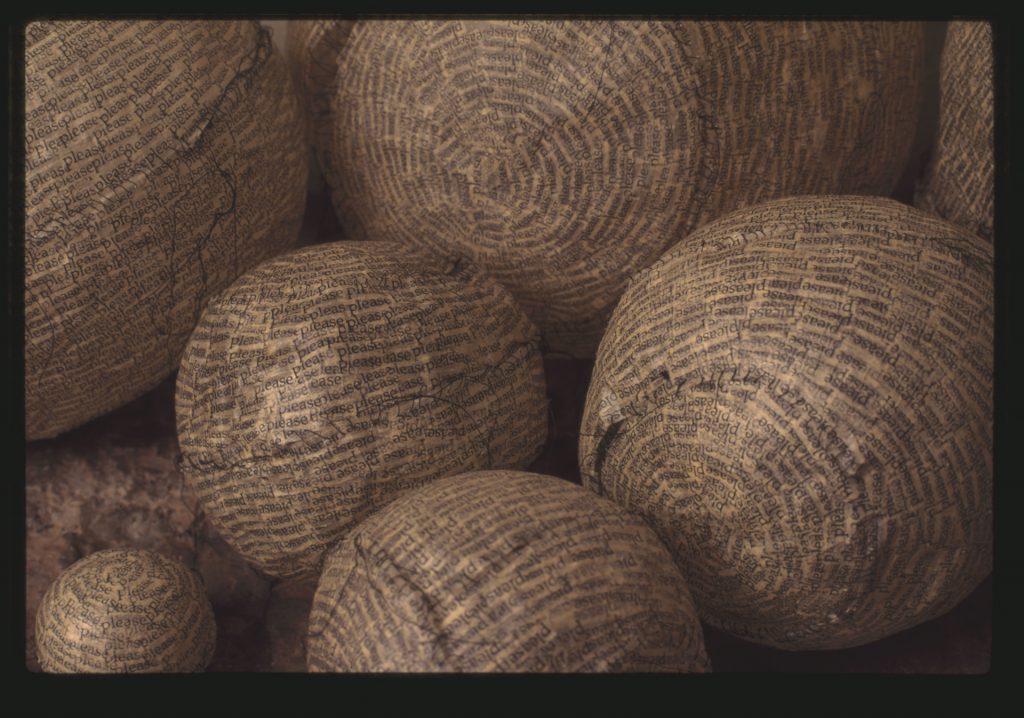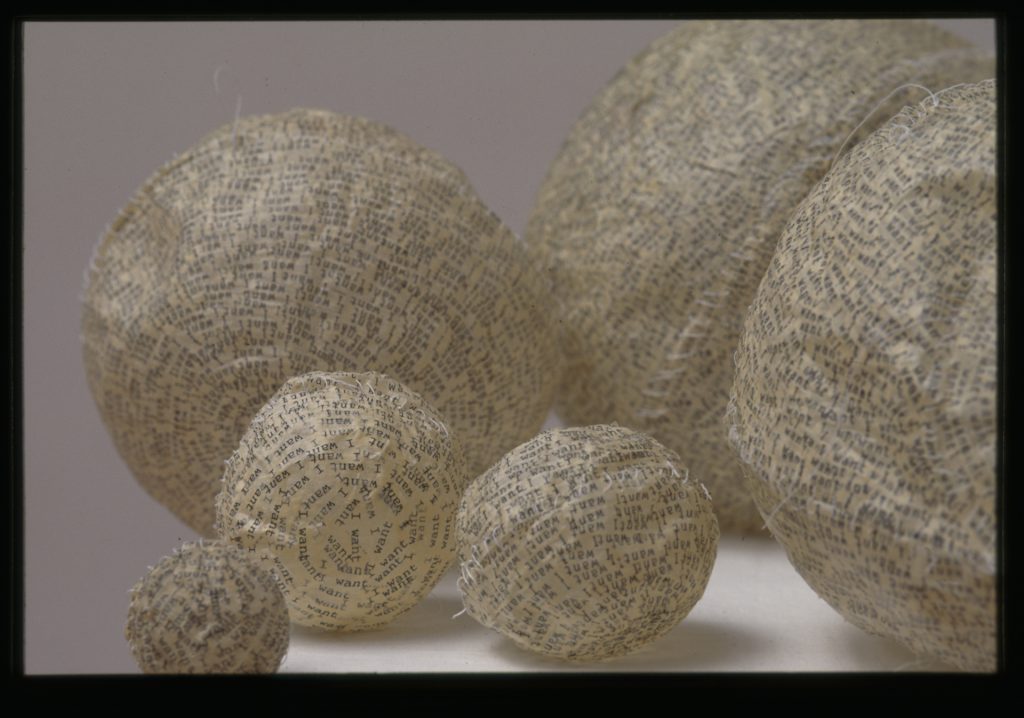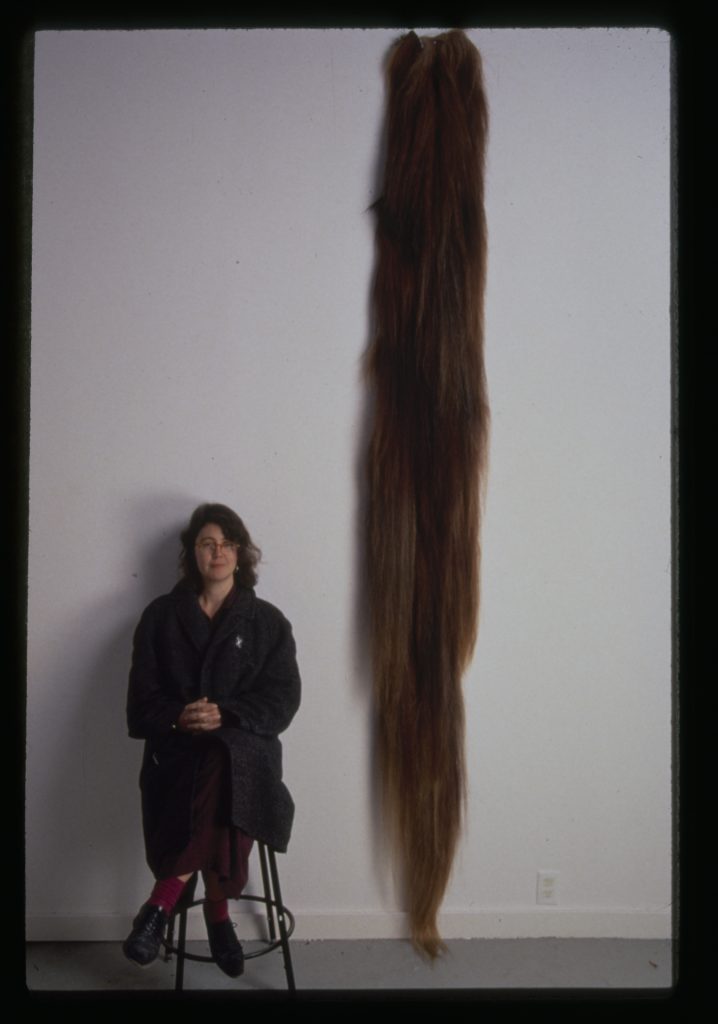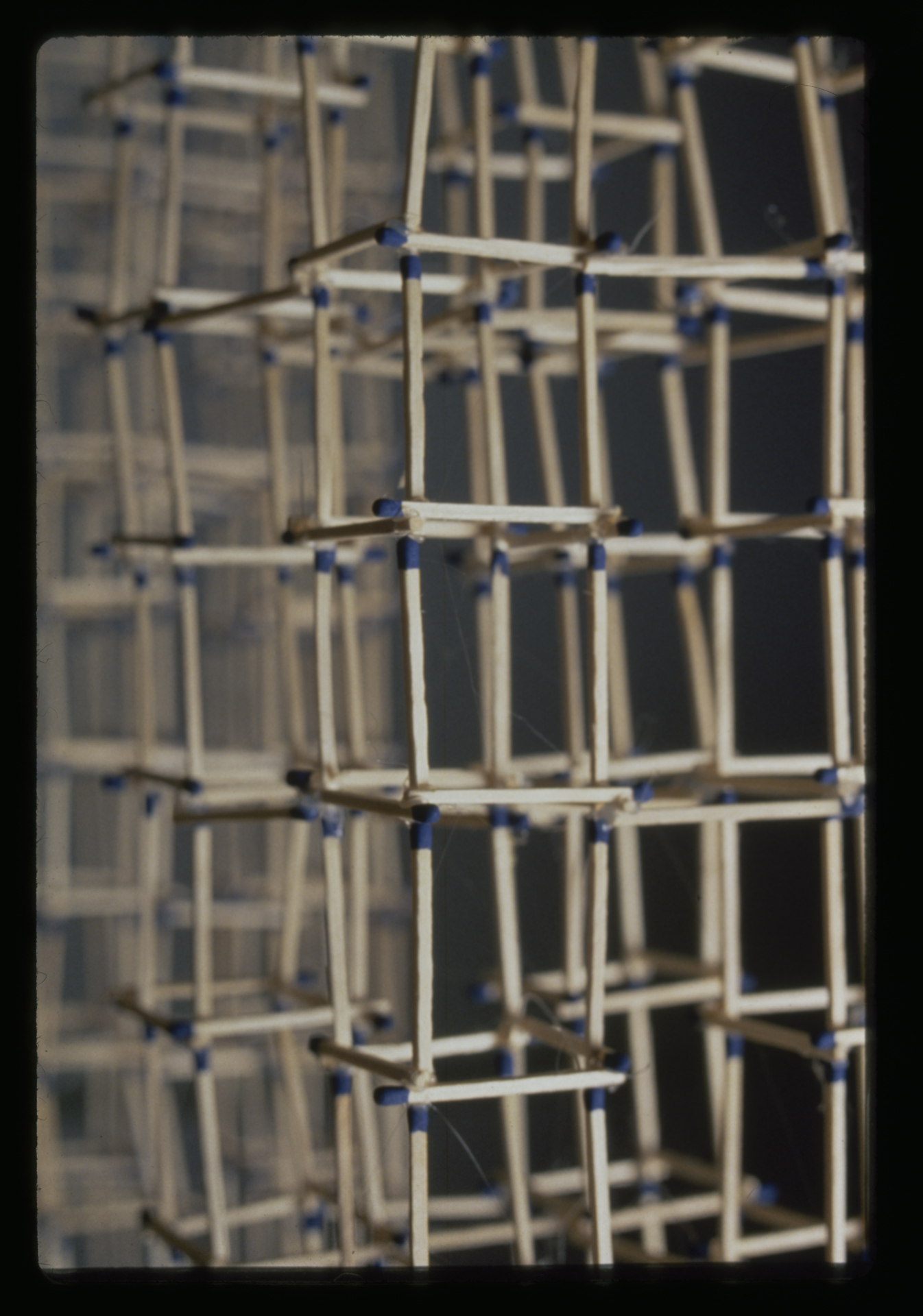
MFA
Have you ever been hated? White hot hate when the source of enmity makes a hobby and social event of it? Turning your every word and action into an opportunity for scorn? I have. It happened in graduate school.
It started on the first day. I was managing my wobbly entry to a new situation by offering a particularly bloated version of myself. It took the legs out from a guy more insecure than me.
Once a collective truth about a person has been established, in this case, “She’s a bitch,” everything I did was shaped by that lens. What art comes from this?
In other oppressive situations, I could be stopped dead, but there was something about a couple of guys walking through my studio saying, “That piece is shit. No wonder her fiancé. left.” that lit a fire under me.
I made a thirteen-foot-high free-standing pediment on columns from 10,000 Ohio Blue Tips matches. Monumental, weightless, unstable. Look at it sideways and it would burst into flames. It served as a portrait of my own volatility at a time and place when anything I said or did would bring harm to myself.
Years later I found this Freud quote—here’s a modified version
“We do our children a great disservice by not teaching them about hostility. We tell them, “Love thy neighbor” but not what to do when their neighbor does not love them. It is as if we are sending them on a polar expedition, dressed for spring, with a map of the Italian lake countries.
Read MoreFreud offers no guidance in what to do when it happens to you.
The presumption of hostility I experienced served me in the art world. I don’t meet a lot of hostility professionally, but there is a huge amount of indifference and more than a little contempt.
The works I made at Mills College had a dense mythic labor to them, like Cinderella pulling lentils from the ashes. I thought of them as songs for the deaf, works made to reach people who did not have the facility to receive them. Several works were so fragile that they would collapse with the lightest touch. Tiny slips of tracing paper, each with “I want” typed on it, glued together with egg white and sewn into spheres. These served as a parallel to my experience of relying on people incapable of taking care of me. I handed them art too fragile to survive their view.
In an unexpected turn of events, a gallery director I knew from writing came to my MFA show. “Oh, I didn’t know you made art.” Come see me in a week or two. I showed with Susan Cummins Gallery for five years. It wasn’t a perfect match. I think her taste had evolved past her clientele. Still, she gave me a forum and a bit of legitimacy that provided me with the confidence to keep making with the last essential element of art practice—a place to show what I had made.
There was one piece from this time that everyone wanted. The Rose Petal Gown was made from thousands of rose petals sewn together with cotton thread. People wept over this piece. I had thirteen shows in the first year out of school, the cost of which got me $13,000 in debt.
The work of graduate school doesn’t always work in the world. Most artists spend a year or two bringing the learning back to themselves. As I did. My last show at Susan Cummins Gallery was the first time I exhibited a shadow drawing. And that was a new beginning.
Read Less